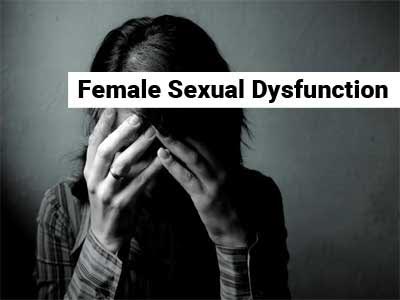- Home
- Editorial
- News
- Practice Guidelines
- Anesthesiology Guidelines
- Cancer Guidelines
- Cardiac Sciences Guidelines
- Critical Care Guidelines
- Dentistry Guidelines
- Dermatology Guidelines
- Diabetes and Endo Guidelines
- Diagnostics Guidelines
- ENT Guidelines
- Featured Practice Guidelines
- Gastroenterology Guidelines
- Geriatrics Guidelines
- Medicine Guidelines
- Nephrology Guidelines
- Neurosciences Guidelines
- Obs and Gynae Guidelines
- Ophthalmology Guidelines
- Orthopaedics Guidelines
- Paediatrics Guidelines
- Psychiatry Guidelines
- Pulmonology Guidelines
- Radiology Guidelines
- Surgery Guidelines
- Urology Guidelines
Nerve stimulation therapy improves sexual dysfunction in women

A recent study published in the journal Neuromodulation has found that a new treatment, traditionally used for overactive bladder, may offer new hope for women with sexual dysfunction.
“It worked for me. I’m not one-hundred percent back to the way I was, but I can have orgasms again and they are pretty good ones”, said a female participant interviewed about her experience regarding the new treatment.
Clinicians commonly prescribe sildenafil hormones, and flibanserin but these methods are not always effective and may lead to undesirable side effects.
Researchers from the University of Michigan found that neuromodulation treatments for bladder dysfunction occasionally led to improvements in sexual function.
“In this particular treatment, a patient receives nerve stimulation therapy once a week to improve neural signaling and function in the muscles that control the bladder,” says Tim Bruns, Ph.D., an assistant professor of biomedical engineering at U-M. “The nerves controlling the pelvic organs start out in the same location in the spinal cord and branch out.”
According to Bruns one form of stimulation is effective for bladder dysfunction despite an odd placement of the electrodes: near the tibial nerve in the ankle. The nerves that travel down to the foot overlap near the spinal cord with some of the nerves to the pelvic organs, leading to a possible overlap in synaptic routes.
Bruns and associates conducted a study to analyze the technique in rats and humans.
In the rat studies, Bruns’ team stimulated nerves in the genital and ankle region. After 15 to 30 minutes, the rodents experienced a strong increase in vaginal blood flow.
The researchers recruited nine women with FSD (and without bladder problems) for a pilot study.
Each woman received 12 half-hour sessions of transcutaneous electrical nerve stimulation in which participants had electrodes placed either in the genital region or on the ankle.
A 53-year-old woman who got involved with the study after reporting difficulty achieving orgasm to her gynecologist described the experience as “a bizarre, pressure vibration sensation.”
Still, she managed. “After a few minutes, however, you get used to it,” the participant recalled. “Then, you sit there for 30 minutes. I brought a book to read during my session.”
Read Also:Abrupt increase in cases of Female Genital cosmetic surgery : BMJ
The results of the study showed that eight of out the nine women reported some improvement in arousal, lubrication, and orgasm.
“Across a variety of clinical studies, if you get a 50 per cent improvement in symptoms, you can consider that a successful response,” Bruns says. “We had four participants meet or exceed that threshold.”
Overall improvement in score was comparable or greater than prior studies of different types of drugs or neuromodulation for FSD, he added.
“This study presents an alternative method for treating female sexual dysfunction that is non-pharmacologic and non-invasive. Through studies like this we can further understand female sexual arousal and offer treatments for a disorder that has very few options,” said Priyanka Gupta, co-author of the study.
Female sexual dysfunction (FSD) is a condition that ranges from a lack of libido to an inability to achieve orgasm and affects 40 to 45 percent of women, especially as they age. It is tough to diagnose FSD but the treatment is even more difficult.

Disclaimer: This site is primarily intended for healthcare professionals. Any content/information on this website does not replace the advice of medical and/or health professionals and should not be construed as medical/diagnostic advice/endorsement or prescription. Use of this site is subject to our terms of use, privacy policy, advertisement policy. © 2020 Minerva Medical Treatment Pvt Ltd